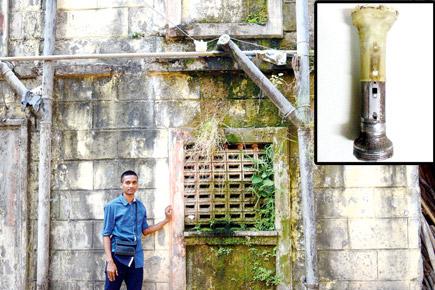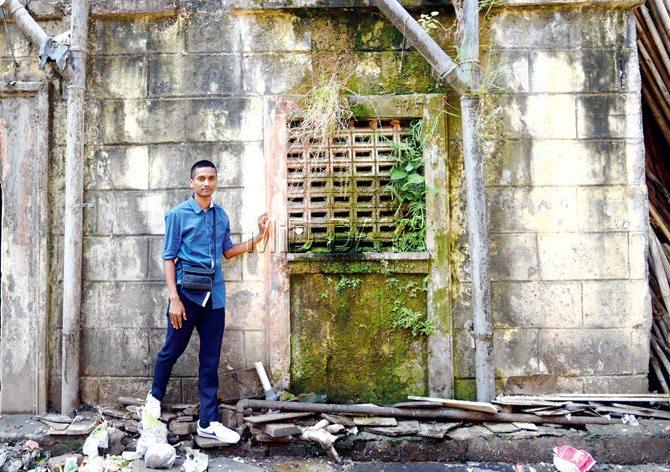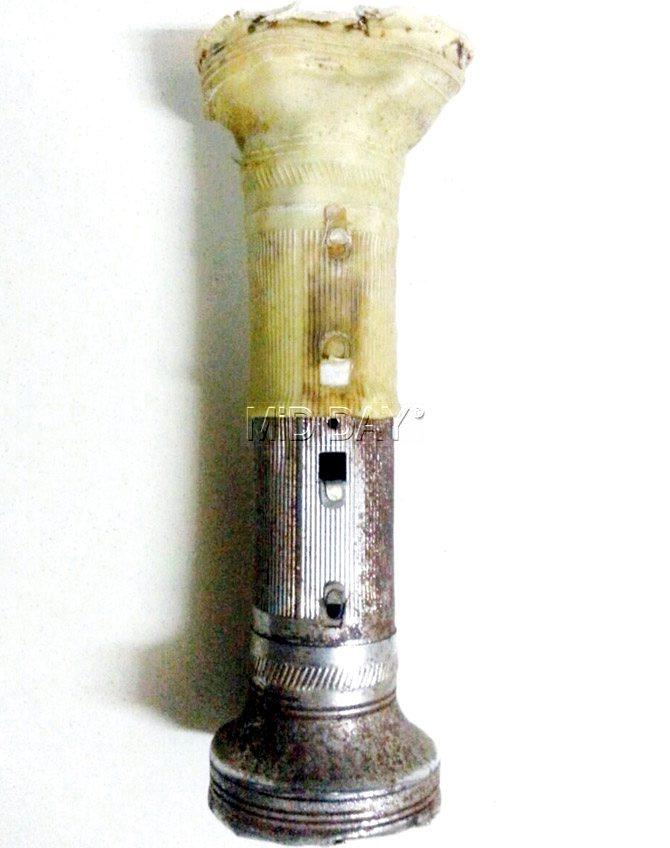From a piece of a BDD chawl wall to the Ambani home reflected in newspaper cutouts, two artists on their idea of 'home'


Amol Patil strikes a pose in the backdrop of a BDD chawl wall, a rubber imprint of which will be displayed at the exhibition. Pics/Suresh Karkera
ADVERTISEMENT
Even as Mumbai prepares to see hundreds of thousands of followers thronging to Chaitya Bhoomi to pay their respects to Dr BR Ambedkar on his 60th death anniversary on December 6, 29-year-old artist Amol Patil will be busy adding finishing touches to his series of artworks and video works that will go on display at an exhibition at Clark House, Colaba on December 8. His works are part of a group show, curiously titled Home Videos, where 12 artists from around the world will be showing what "home" means to them.
Patil's works will mirror the life behind the Victorian stone-walls of the BDD chawls [Bombay Development Directorate] in the city, where the sweeper community has been residing for over 40 years now. The artist, who was born in a BDD chawl at Crawford market, says the project was more like a diary for him, where he tried to capture remnants of his own family history and that of his neighbours.

His grandfather's torchlight
"My grandfather was a pohwada singer in a village and used to write poetry. My father was a theatre artiste. Theatre and performance arts are still very much a part of this community culture, so the stage plays a vital role in my videos. I have also included footage from the rallies on Ambedkar Jayanti, and most importantly, interviews of the residents of BDD chawls where they have shared their life experiences — something that they don't normally like to talk about." The videos, Amol says, show the dismal condition they live in and also the confused battle they are fighting. "The community is torn between clinging to the security of a government job and breaking free from the 'sweeper' tag. More than 55 per cent of them have TB. Their reality needs to reach more people," he adds.
Patil chose to tell a part of this story in videos because he felt an artwork wouldn't have been enough to express all that he wanted to. There is, however, another aspect to his works that's more personal. The artist who specialises in creating skin imprints, has immortalised the wall of the Parel BDD chawl. "Now, with the redevelopment talks on, you never know when these get demolished. So, I took out the skin of a wall and imprinted that on rubber, which will be hung at the display." He has done the same with his grandfather's 70-year-old torchlight, a vegetable basket, a bathroom drain, an oil can, a sewing machine and a doormat. "This is my way of capturing a picture of the daily essentials in these households. Being an insider helped," Patil says.

Yogesh Barve. Pic/Bipin Kokate
Jostling for space, under the same roof as BDD chawls, will be a prototype of Mukesh Ambani's Antilia, an installation by Yogesh Barve. While the towering billion-dollar monument is not exactly Barve's idea of home, "it stems from my angst at being broke," says the 27-year-old artist with a chuckle. Barve's idea is to take old newspapers, cut them in the exact dimension of a 100-dollar bill and stick them all over the box.
"When I sat to calculate what's one billion USD in Indian currency, I arrived at a 15-digit figure, that cannot even be put in words. I chose newspaper notes as, because I'm broke, I don't have the resources to print. So, while on the one hand Ambani has created the world's most expensive house, I don't even have the resources to finish a nakli version of it. I am actually thinking of leaving it unfinished," says the artist who has used 300 kilos of newspapers already.
"I've spent R6,000 on this so far and I need to buy 500 kilos more," Barve adds. The show promises to be a graphic image of contrasts. Besides the Antilia prototype, Barve has also done an installation of objects he has collected from the homes of the workers in Kamala Mills. We see an old dust-laden calendar, the metal blades of a rusty ceiling fan stuck on a wall. "These workers had to constantly vacate their homes within the mill premises, to make space for a new construction. These objects tell stories about their displaced identities."
 Subscribe today by clicking the link and stay updated with the latest news!" Click here!
Subscribe today by clicking the link and stay updated with the latest news!" Click here!






